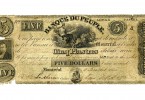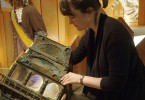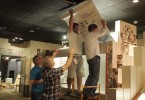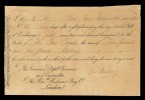Explore stories from our collection and our economic heritage.
November 18, 2013
Notes from the Collection: A Buying Trip to Toronto
By: Paul S. Berry
Recently, from October 3 to 5th, collections staff were at the Toronto Coin Expo, held at the Toronto Reference Library on Yonge Street. The show boasts informative lectures, a large auction of coins, tokens and paper money as well as a showroom, called a bourse, where dealers greet clients and buy and sell material.
Content type(s):
Blog posts
October 28, 2013
Director’s chair : A little help from our friends
By: Ken Ross
In one of my favourite cinematic moments, the 11 year-old chess prodigy, Josh Waitzkin, imagines sweeping the pieces off a chess board in order to help him think more clearly about an important game of chess. It is a championship game and he is on the brink of winning it all.
Content type(s):
Blog posts
October 7, 2013
The Cases are Almost Empty
By: Graham Iddon
For the first time since they went into their cases in 1980, over 2000 coins, notes, beads and shells are coming back out. The Museum’s curatorial staff are busily pulling panels from cases, placing coins into specially prepared drawers and sliding notes into acid-free Mylar envelopes.
Content type(s):
Blog posts
September 24, 2013
Curators Begin Removal of Artifacts
By: Graham Iddon
The doors were barely closed following Big Top Farewell event before Chief Curator Paul Berry and his team began emptying display cases that had been sealed shut since 1980. The biggest task involved removing more than 2500 bank notes from the room we knew as Gallery 8.
Content type(s):
Blog posts
September 16, 2013
Notes from the Collection : 2013 RCNA Convention Winnipeg
By: David Bergeron
Another convention of the Royal Canadian Numismatic Association (RCNA) wrapped up in July. This year the convention was held in Winnipeg, Manitoba. It was the first time in over thirty years that the RCNA Convention made a stop there.
Content type(s):
Blog posts




